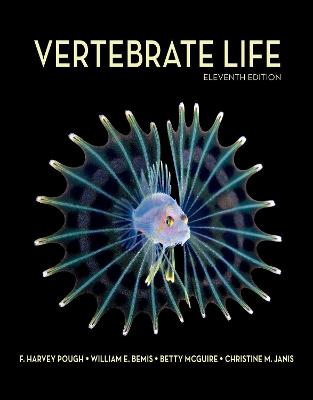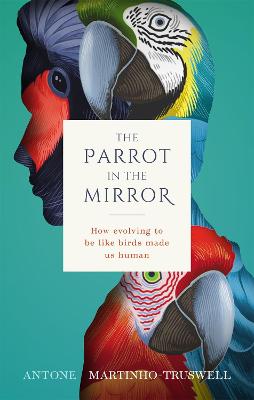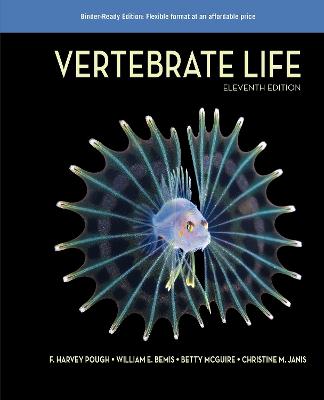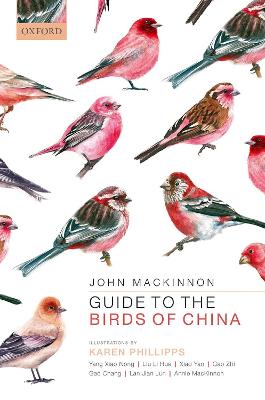Vertebrate Life
 -10%
portes grátis
-10%
portes grátis
Vertebrate Life
McGuire, Betty Anne; Bemis, William E.; Janis, Christine M.; Pough, Harvey
Oxford University Press Inc
11/2022
656
Mole
Inglês
9780197558621
15 a 20 dias
Descrição não disponível.
PrefaceChapter 1. Diversity, Classification, and Evolution of Vertebrates1.1 The Vertebrate Story --Binominal nomenclature --Extant vertebrate groups1.2 Phylogenetic Systematics1.3 Applying Phylogenetic Criteria --Evaluating possible phylogenies --Molecules and morphology --The problem of dating --Dagger (?) convention adopted in this book1.4 Using Phylogenetic Trees --Extant phylogenetic brackets --Paraphyly --Crown and stem groups1.5 Genetic Mechanisms of Evolutionary Change --Phenotypes and fitness --Developmental regulatory genes1.6 Epigenetic Effects1.7 Earth History and Vertebrate EvolutionChapter 2. What Is a Vertebrate? 2.1 Vertebrates in Relation to Other Animals?2.2 Characteristics of Chordates? --Chordate origins and evolution? --Extant nonvertebrate chordates?2.3 What Distinguishes a Vertebrate??2.4 Vertebrate Embryonic Development? --Development of the body? --Development of the pharyngeal region? --Development of the brain? --Other neurogenic tissues of vertebrates?2.5 Vertebrate Tissues? --Adult tissue types --Mineralized tissues2.6 Vertebrate Organ Systems --Integumentary system --Skeletal system --Muscular system --Nervous system and sense organs --Endocrine system --Respiratory system --Circulatory system --Digestive system --Excretory and reproductive systemsChapter 3. Jawless Vertebrates and the Origin of Gnathostomes 3.1 Earliest Evidence of Vertebrates --Enigmas: ?Conodonts and ?Tullimonstrum ---Early mineralized tissues --Environment of early vertebrate evolution3.2 Cyclostomes: Extant Jawless Vertebrate --Characters of cyclostomes --Hagfishes: Myxiniformes --Lampreys: Petromyzontiformes3.3 Jawless Osteognathostomes3.4 Gnathostome Body Plan --Gnathostome skeletons --What about soft anatomical features?3.5 Origin of Jaws --Hypotheses of jaw origins --Importance of the nose --Selective value of jaws3.6 Origin of Paired Appendages --Fin development and the lateral somitic frontier --Advantages of fins3.7 Extinct Paleozoic Jawed FishesChapter 4. Living in Water 4.1 Aquatic Environment --Obtaining oxygen from water using gill --Obtaining oxygen from air using lungs and other respiratory structure --Adjusting buoyancy4.2 Sensory World of Aquatic Vertebrates --Vision --Chemosensation: Olfaction and taste --Detecting water displacement --Hearing and equilibrium --Electroreception and electrogenesis4.3 Maintaining an Internal Environment --Nitrogenous wastes and kidney --Osmoregulation --Regulation of ions and body fluids4.4 Osmoregulation in Different Environments --Marine cartilaginous fishes and coelacanths --Marine teleosts --Freshwater teleosts and lissamphibians --Euryhaline vertebratesChapter 5. Geography and Ecology of the Paleozoic 5.1 Deep Time --The Precambrian world --The Paleozoic5.2 Continental Geography --Continental drift and plate tectonics --Shifting continents of the Paleozoic --Shifting continents and changing climates5.3 Paleozoic Climates5.4 Paleozoic Ecosystems --Aquatic life --Terrestrial flora --Terrestrial fauna5.5 Extinctions Chapter 6 Origin and Radiation of Chondrichthyans6.1 Acanthodii6.2 Chondrichthyes --Habitats and diversity --Placoid scales --Cartilaginous skeleton --Teeth and tooth plates --Jaws and jaw suspension --Internal fertilization and claspers --Distinctive soft tissue and physiological features6.3 Euchondrocephali and Chimaeriformes --Biology of extant Chimaeriformes6.4 Elasmobranchii, Euselachii, and Neoselachii --Selachii: Sharks --Batomorphi: Skates and rays6.5 Biology of Neoselachii --Feeding --Bioluminescence and biofluorescence ---Hypoxia and the epaulette shark --Endothermal heterothermy --Swimming --Reproduction --Elasmobranch brains --Social networks and migration in sand tiger sharks6.6 Declining Elasmobranch Populations --Conservation and sawfishes --Threats to chondrichthyans --Vulnerabilities of chondrichthyans --Ecological impacts of shark population declines --Policies to protect sharksChapter 7. Origin of Osteichthyes and Radiation of Actinopterygian 7.1 Osteichthyes, Actinopterygii, and Sarcopterygi --Osteichthyan character --Fin adaptations --Other differences between actinopterygians and sarcopterygians7.2 Actinopterygii: Basal Group --Polypteriformes --Acipenseriformes --Neopterygii: Holostei --Neopterygii: Teleoste7.3 Characters of Teleostei7.4 Teleostei: Basal Groups --Elopomorpha --Osteoglossomorpha --Otocephala --Basal euteleosts7.5 Teleostei: Acanthopterygii --Basal acanthopterygians --Percomorph7.6 Swimming and Hydrodynamics --Generating forward thrust --Modes of locomotion --Speed and drag --Steering, stopping, and staying in place7.7 Reproduction and Development --Oviparity --Viviparity --Sex change in teleosts7.8 Ecology of Marine Teleosts --Black-water diving and larval teleosts --The photic zone and its subdivisions --Coral reef fishes --Pelagic and deep-sea fishesChapter 8. Sarcopterygians and the Origin of Tetrapods 8.1 Phylogenetic Concepts of Tetrapoda and Characters for Sarcopterygii8.2 The Miguasha Lagerstaette and the "Good Fossil Effect"8.3 Actinistia --?Onychodontia --Coelacanthiformes8.4 Dipnomorpha --?Porolepiformes --Dipnoi ?8.5 Tetrapodomorpha --Basal tetrapodomorphs --Tetrapods8.6 Moving onto Land --How did fins become limbs? --Body support and locomotion of early tetrapods8.7 Paleoecology of Devonian TetrapodomorphsChapter 9. Origins of Lissamphibia and Amniota 9.1 Paleozoic Tetrapods and the Origins of Extant Groups --Temnospondyli --Origins of Lissamphibia --Reptiliomorpha and the origin of amniotes --Paleozoic diversification of amniotes9.2 Characters of Amniotes --Skeletal characters --The amniotic egg --Other soft-tissue characters of amniotes9.3 Diversification of Amniotes --Temporal fenestration: Synapsids and diapsid --Ankle evolution in amnioteChapter 10. Geography and Ecology of the Mesozoic 10.1 Continental Geography and Climates --Continental movements --Climate shifts10.2 Terrestrial Ecosystems --Flora --Fauna10.3 Marine Ecosystems --Faunal composition: Apex predators --Other clades10.4 Extinctions --Triassic and Jurassic extinctions --Cretaceous extinctionsChapter 11. Living on Land 11.1 Support on Land --Axial skeleton --Axial muscle --Appendicular skeleton --Size and scaling11.2 Locomotion11.3 Eating11.4 Breathing Air11.5 Pumping Blood Uphill11.6 Sensory Systems --Vision --Hearing and equilibrium --Olfaction11.7 Conserving Water in a Dry Environment --Cutaneous water loss --Respiratory water loss --Excretory water lossChapter 12. Lissamphibians 12.1 Diversity of Lissamphibians --Synapomorphies of Lissamphibia --Salamanders --Anurans --Caecilians12.2 Life Histories of Lissamphibians --Mating and reproduction in salamanders --Anuran mating and reproduction --Anuran metamorphosis --The ecology of tadpoles --Caecilian reproduction and development12.3 Respiration and Circulation --Cutaneous respiration and blood flow --Blood flow in larvae and adults12.4 Water Relations --Uptake and storage of water --Cutaneous water loss --Behavioral control of cutaneous water loss12.5 Crypsis, Warning Colors, Toxins, and Venoms --Skin glands and toxins --Toxicity and diet --Venomous lissamphibians12.6 Why Are Lissamphibians Vanishing? --Chytrid fungi --Synergisms and domino effectsChapter 13. Synapsids and Sauropsids: Two Ways of Living on the Land 13.1 Conflicts between Locomotion and Respiration13.2 Lungs and Lung Ventilation: Supplying Oxygen to the Blood --Synapsid lungs --Sauropsid lungs13.3 Circulatory Systems: Supplying Oxygen to Tissues --Systemic arches of mammals and birds --Hearts with a ventricular septum: Mammals and birds --Hearts without a ventricular septum: Turtles and lepidosaurs --Shunting blood when the heart has a ventricular septum: Crocodylians13.4 Getting Rid of Wastes: The Kidneys --Nitrogenous waste products --Nitrogen excretion by synapsids: The mammalian kidney --Nitrogen excretion by sauropsids: Renal and extrarenal routesChapter 14. Ectothermy and Endothermy: Two Ways of Regulating Body Temperature 14.1 Why Regulate Body Temperature?14.2 Ectothermal Thermoregulation --Energy exchange and mechanisms of ectothermy --Thermal ecology of ectotherms14.3 Endothermal Thermoregulation --Mechanisms of endothermal thermoregulation?14.4 Pure Ectothermy and Pure Endothermy Lie at the Extremes of a Continuum --Endothermal ectotherms --Heterothermal endotherms: Torpor and hibernation --Heterothermal endotherms: Hyperthermia and life in the desert14.5 Evolution of Endothermy --How did endothermy evolve? --Evaluating the models --Many factors14.6 Thermoregulation, Energy Use, and Body Size --Energy requirements --Body size --Gigantothermy and the body temperatures of dinosaurs14.7 Ectotherms, Endotherms, and EcosystemsChapter 15. Lepidosaurs 15.1 Characters and Diversity of Lepidosaurs --Rhynchocephalians and the biology of tuatara --Squamata: Lizards --Squamata: Serpentes15.2 Foraging Modes15.3 Skull Kinesis and Feeding --Feeding specializations of snakes --Venom and fangs --Hearts and stomachs15.4 Predator Avoidance and Defense --Crypsis, aposematism, and mimicry --Deterrence --Autotomy --Venom and poisons as defense mechanisms15.5 Social Behavior --Courtship and territoriality --Sociality and parental care15.6 Reproductive Modes --Oviparity and viviparity --Parthenogenesis --Sex determination15.7 Climate ChangeChapter 16. Turtles 16.1 Form and Function --Shell and skeleton --Head retraction --Lung ventilation --Evolution of the turtle body plan16.2 Diversity16.3 Social Behavior, Communication, and Courtship16.4 Reproduction --Environmental sex determination --Parental care --Hatching and the behavior of baby turtles16.5 Navigation and Migration --Navigation by adult sea turtles --Navigation by hatchling and juvenile sea turtles16.6 Turtles in Trouble --Life history --Turtles are both delicious and considered medicinal --Turtles are in demand as pets --Sea turtles face extra risksChapter 17. Crocodylians 17.1 Diversity of Extant Crocodylians --Distribution of extant crocodylians --Locomotion17.2 The Crocodylomorph Lineage --?Notosuchia --Neosuchia --Neosuchia17.3 Predatory Behavior and Diet17.4 Communication and Social Behavior17.5 Reproduction and Parental Care --Environmental sex determination --Parental care17.6 Threats to and from Crocodylians --Threats from crocodylians --Threats to crocodylians --Reconciling humans and crocodyliansChapter 18. Avemetatarsalia and the Origin of Dinosauria 18.1 Characters and Systematics of Avemetatarsalia18.2 ?Pterosaurs: Vertebrates Achieve Powered Flight --Structure of ?pterosaurs --Reproduction, eggs, and parental care --Did the evolution of birds doom ?pterosaurs18.3 Dinosaurs: One of the Most Successful Tetrapod Radiations --The structure of dinosaurs18.4 ?Ornithischia --?Thyreophora --?Neornithischia --?Marginocephalia --?Ornithopoda --Social behavior of ?ornithischian dinosaurs --Nesting and parental care by ?ornithischians --?Neornithischia --?Marginocephalia --?Ornithopoda --Social behavior of ?ornithischian dinosaurs --Nesting and parental care by ?ornithischians18.5 ?Sauropodomorpha --Social behavior of ?sauropod --Nesting and parental care by ?sauropodomorphs?Chapter 19. Theropods and the Origin of Birds 19.1 Characters and Systematics of Theropods --Phylogenetic overview of Theropoda --?Coelophysoids: Early theropods --?Ceratosauria --Tetanurae --Community ecology of theropods --Social behavior of theropods19.2 ?Archaeopteryx, Mesozoic Avialans, and the Mosaic Evolution of Avian Characters --Discovery of ?Archaeopteryx --Cretaceous avialans --Mosaic evolution of some avialan characters --Other avian features --Body size19.3 Evolution of Powered Flight --How-and why-birds got off the ground --Gliding and flying by other Mesozoic paravians19.4 Reproduction and Parental Care by Theropods --Eggs and nests --Parental care of hatchlingsChapter 20. Geography and Ecology of the Cenozoic 20.1 Continental Geography and Climates --Continental movements --Cenozoic climates20.2 Cenozoic Ecosystems --Fossil Lake --Freshwater habitats --Marine habitats --Terrestrial flora --Terrestrial fauna20.3 The Great American Biotic Interchange --Terrestrial vertebrates of North and South America --Faunal interchange --Marine fauna and isthmian pairs20.4 ExtinctionsChapter 21. Extant Birds 21.1 Diversity of Aves21.2 Structural Specializations for Flight and Bipedalism --Body size --Feathers --Streamlining and weight reduction --Skeleton --Muscles21.3 Wings and Flight --Flight mechanics --Wing shape and flight21.4 Feet and Locomotion --Hopping, walking, and running --Swimming21.5 Bills, Feeding, and Digestion --Bills, cranial kinesis, and tongues --Digestive tract21.6 Sensory Systems --Vision --Hearing --Olfaction --Touch21.7 Communication --Vocalization --Sonation --Visual displays21.8 Reproduction --Reproductive organs and insemination --Egg structure --Maternal effects ---Sex determination -Hatching and developmental state of young21.9 Parental Care --Nest building --Incubating --Feeding young --Interspecific brood parasitism21.10 Orientation, Navigation, and Migration --Navigational abilities --Using multiple cues during navigation --Seasonal migration21.11 ConservationChapter 22. Synapsids and the Origin of Mammals 22.1 Synapsid Evolution --Cranial skeleton and teeth --Phylogenetic history of synapsids22.2 Jaw Joints and Middle Ear Bones22.3 Other Mammalian Features --Teeth --Specializations of the palate and tongue for swallowing --Facial muscles --Integument --Lactation, nursing, and suckling --Brain and senses --Internal anatomy22.4 Basal Mammalian Clades --Prototheria --?Allotheria --TheriaChapter 23. Therians 23.1 Therian Features and Origins of Marsupialia and Placentalia --Therian skeletons23.2 Diversity of Marsupials --Marsupials and the Australian fauna23.3 Diversity of Placentals --Atlantogenata --Boreoeutheria23.4 Reproduction --Genitalia --Urogenital tracts --Placentation --Gestation --Evolution of therian viviparity23.5 Teeth and Feeding Specializations --Cusps and lophs --Carnivores and herbivores: Differences in jaw muscles --Digestive tracts23.6 Locomotion --Limbs: Speed versus power --Cursorial adaptations of ungulate limbs --Digging --Powered flight of bats --Swimming --Cetacean evolution23.7 Trophy Hunting and Extinction Risk --Bighorn sheep: A case study --Endangering the endangered: The effect of perceived rarity --The extinction vortexChapter 24. Primate Evolution and the Emergence of Humans 24.1 Primate Origins and Diversification --Basal primates --Euprimates --Anthropoids --New World monkeys --Old World monkeys and apes24.2 Origin and Evolution of Hominoidea --Hylobatidae --Hominidae --Homininae24.3 Origin and Evolution of Hominini --Distinctive features of hominins --Early hominins24.4 The Genus Homo --?Homo habilis --?Homo erectus --?Dmanisi hominins --?Neanderthals --?Denisovan hominins --?Homo longi --Island species and miniaturization --?Homo naledi --?Homo bodoensis --Origin and radiation of Homo sapiens --What happened to the humans who were already there?24.5 Evolution of Human Characters --Bipedalism --Large brains --Speech and language24.6 Humans and Other Vertebrates --Humans as superpredators and environmental disruptors --Megafaunal extinctions --Is this the Anthropocene?AppendixA-1 GlossaryG-1 IndexI-1
Este título pertence ao(s) assunto(s) indicados(s). Para ver outros títulos clique no assunto desejado.
PrefaceChapter 1. Diversity, Classification, and Evolution of Vertebrates1.1 The Vertebrate Story --Binominal nomenclature --Extant vertebrate groups1.2 Phylogenetic Systematics1.3 Applying Phylogenetic Criteria --Evaluating possible phylogenies --Molecules and morphology --The problem of dating --Dagger (?) convention adopted in this book1.4 Using Phylogenetic Trees --Extant phylogenetic brackets --Paraphyly --Crown and stem groups1.5 Genetic Mechanisms of Evolutionary Change --Phenotypes and fitness --Developmental regulatory genes1.6 Epigenetic Effects1.7 Earth History and Vertebrate EvolutionChapter 2. What Is a Vertebrate? 2.1 Vertebrates in Relation to Other Animals?2.2 Characteristics of Chordates? --Chordate origins and evolution? --Extant nonvertebrate chordates?2.3 What Distinguishes a Vertebrate??2.4 Vertebrate Embryonic Development? --Development of the body? --Development of the pharyngeal region? --Development of the brain? --Other neurogenic tissues of vertebrates?2.5 Vertebrate Tissues? --Adult tissue types --Mineralized tissues2.6 Vertebrate Organ Systems --Integumentary system --Skeletal system --Muscular system --Nervous system and sense organs --Endocrine system --Respiratory system --Circulatory system --Digestive system --Excretory and reproductive systemsChapter 3. Jawless Vertebrates and the Origin of Gnathostomes 3.1 Earliest Evidence of Vertebrates --Enigmas: ?Conodonts and ?Tullimonstrum ---Early mineralized tissues --Environment of early vertebrate evolution3.2 Cyclostomes: Extant Jawless Vertebrate --Characters of cyclostomes --Hagfishes: Myxiniformes --Lampreys: Petromyzontiformes3.3 Jawless Osteognathostomes3.4 Gnathostome Body Plan --Gnathostome skeletons --What about soft anatomical features?3.5 Origin of Jaws --Hypotheses of jaw origins --Importance of the nose --Selective value of jaws3.6 Origin of Paired Appendages --Fin development and the lateral somitic frontier --Advantages of fins3.7 Extinct Paleozoic Jawed FishesChapter 4. Living in Water 4.1 Aquatic Environment --Obtaining oxygen from water using gill --Obtaining oxygen from air using lungs and other respiratory structure --Adjusting buoyancy4.2 Sensory World of Aquatic Vertebrates --Vision --Chemosensation: Olfaction and taste --Detecting water displacement --Hearing and equilibrium --Electroreception and electrogenesis4.3 Maintaining an Internal Environment --Nitrogenous wastes and kidney --Osmoregulation --Regulation of ions and body fluids4.4 Osmoregulation in Different Environments --Marine cartilaginous fishes and coelacanths --Marine teleosts --Freshwater teleosts and lissamphibians --Euryhaline vertebratesChapter 5. Geography and Ecology of the Paleozoic 5.1 Deep Time --The Precambrian world --The Paleozoic5.2 Continental Geography --Continental drift and plate tectonics --Shifting continents of the Paleozoic --Shifting continents and changing climates5.3 Paleozoic Climates5.4 Paleozoic Ecosystems --Aquatic life --Terrestrial flora --Terrestrial fauna5.5 Extinctions Chapter 6 Origin and Radiation of Chondrichthyans6.1 Acanthodii6.2 Chondrichthyes --Habitats and diversity --Placoid scales --Cartilaginous skeleton --Teeth and tooth plates --Jaws and jaw suspension --Internal fertilization and claspers --Distinctive soft tissue and physiological features6.3 Euchondrocephali and Chimaeriformes --Biology of extant Chimaeriformes6.4 Elasmobranchii, Euselachii, and Neoselachii --Selachii: Sharks --Batomorphi: Skates and rays6.5 Biology of Neoselachii --Feeding --Bioluminescence and biofluorescence ---Hypoxia and the epaulette shark --Endothermal heterothermy --Swimming --Reproduction --Elasmobranch brains --Social networks and migration in sand tiger sharks6.6 Declining Elasmobranch Populations --Conservation and sawfishes --Threats to chondrichthyans --Vulnerabilities of chondrichthyans --Ecological impacts of shark population declines --Policies to protect sharksChapter 7. Origin of Osteichthyes and Radiation of Actinopterygian 7.1 Osteichthyes, Actinopterygii, and Sarcopterygi --Osteichthyan character --Fin adaptations --Other differences between actinopterygians and sarcopterygians7.2 Actinopterygii: Basal Group --Polypteriformes --Acipenseriformes --Neopterygii: Holostei --Neopterygii: Teleoste7.3 Characters of Teleostei7.4 Teleostei: Basal Groups --Elopomorpha --Osteoglossomorpha --Otocephala --Basal euteleosts7.5 Teleostei: Acanthopterygii --Basal acanthopterygians --Percomorph7.6 Swimming and Hydrodynamics --Generating forward thrust --Modes of locomotion --Speed and drag --Steering, stopping, and staying in place7.7 Reproduction and Development --Oviparity --Viviparity --Sex change in teleosts7.8 Ecology of Marine Teleosts --Black-water diving and larval teleosts --The photic zone and its subdivisions --Coral reef fishes --Pelagic and deep-sea fishesChapter 8. Sarcopterygians and the Origin of Tetrapods 8.1 Phylogenetic Concepts of Tetrapoda and Characters for Sarcopterygii8.2 The Miguasha Lagerstaette and the "Good Fossil Effect"8.3 Actinistia --?Onychodontia --Coelacanthiformes8.4 Dipnomorpha --?Porolepiformes --Dipnoi ?8.5 Tetrapodomorpha --Basal tetrapodomorphs --Tetrapods8.6 Moving onto Land --How did fins become limbs? --Body support and locomotion of early tetrapods8.7 Paleoecology of Devonian TetrapodomorphsChapter 9. Origins of Lissamphibia and Amniota 9.1 Paleozoic Tetrapods and the Origins of Extant Groups --Temnospondyli --Origins of Lissamphibia --Reptiliomorpha and the origin of amniotes --Paleozoic diversification of amniotes9.2 Characters of Amniotes --Skeletal characters --The amniotic egg --Other soft-tissue characters of amniotes9.3 Diversification of Amniotes --Temporal fenestration: Synapsids and diapsid --Ankle evolution in amnioteChapter 10. Geography and Ecology of the Mesozoic 10.1 Continental Geography and Climates --Continental movements --Climate shifts10.2 Terrestrial Ecosystems --Flora --Fauna10.3 Marine Ecosystems --Faunal composition: Apex predators --Other clades10.4 Extinctions --Triassic and Jurassic extinctions --Cretaceous extinctionsChapter 11. Living on Land 11.1 Support on Land --Axial skeleton --Axial muscle --Appendicular skeleton --Size and scaling11.2 Locomotion11.3 Eating11.4 Breathing Air11.5 Pumping Blood Uphill11.6 Sensory Systems --Vision --Hearing and equilibrium --Olfaction11.7 Conserving Water in a Dry Environment --Cutaneous water loss --Respiratory water loss --Excretory water lossChapter 12. Lissamphibians 12.1 Diversity of Lissamphibians --Synapomorphies of Lissamphibia --Salamanders --Anurans --Caecilians12.2 Life Histories of Lissamphibians --Mating and reproduction in salamanders --Anuran mating and reproduction --Anuran metamorphosis --The ecology of tadpoles --Caecilian reproduction and development12.3 Respiration and Circulation --Cutaneous respiration and blood flow --Blood flow in larvae and adults12.4 Water Relations --Uptake and storage of water --Cutaneous water loss --Behavioral control of cutaneous water loss12.5 Crypsis, Warning Colors, Toxins, and Venoms --Skin glands and toxins --Toxicity and diet --Venomous lissamphibians12.6 Why Are Lissamphibians Vanishing? --Chytrid fungi --Synergisms and domino effectsChapter 13. Synapsids and Sauropsids: Two Ways of Living on the Land 13.1 Conflicts between Locomotion and Respiration13.2 Lungs and Lung Ventilation: Supplying Oxygen to the Blood --Synapsid lungs --Sauropsid lungs13.3 Circulatory Systems: Supplying Oxygen to Tissues --Systemic arches of mammals and birds --Hearts with a ventricular septum: Mammals and birds --Hearts without a ventricular septum: Turtles and lepidosaurs --Shunting blood when the heart has a ventricular septum: Crocodylians13.4 Getting Rid of Wastes: The Kidneys --Nitrogenous waste products --Nitrogen excretion by synapsids: The mammalian kidney --Nitrogen excretion by sauropsids: Renal and extrarenal routesChapter 14. Ectothermy and Endothermy: Two Ways of Regulating Body Temperature 14.1 Why Regulate Body Temperature?14.2 Ectothermal Thermoregulation --Energy exchange and mechanisms of ectothermy --Thermal ecology of ectotherms14.3 Endothermal Thermoregulation --Mechanisms of endothermal thermoregulation?14.4 Pure Ectothermy and Pure Endothermy Lie at the Extremes of a Continuum --Endothermal ectotherms --Heterothermal endotherms: Torpor and hibernation --Heterothermal endotherms: Hyperthermia and life in the desert14.5 Evolution of Endothermy --How did endothermy evolve? --Evaluating the models --Many factors14.6 Thermoregulation, Energy Use, and Body Size --Energy requirements --Body size --Gigantothermy and the body temperatures of dinosaurs14.7 Ectotherms, Endotherms, and EcosystemsChapter 15. Lepidosaurs 15.1 Characters and Diversity of Lepidosaurs --Rhynchocephalians and the biology of tuatara --Squamata: Lizards --Squamata: Serpentes15.2 Foraging Modes15.3 Skull Kinesis and Feeding --Feeding specializations of snakes --Venom and fangs --Hearts and stomachs15.4 Predator Avoidance and Defense --Crypsis, aposematism, and mimicry --Deterrence --Autotomy --Venom and poisons as defense mechanisms15.5 Social Behavior --Courtship and territoriality --Sociality and parental care15.6 Reproductive Modes --Oviparity and viviparity --Parthenogenesis --Sex determination15.7 Climate ChangeChapter 16. Turtles 16.1 Form and Function --Shell and skeleton --Head retraction --Lung ventilation --Evolution of the turtle body plan16.2 Diversity16.3 Social Behavior, Communication, and Courtship16.4 Reproduction --Environmental sex determination --Parental care --Hatching and the behavior of baby turtles16.5 Navigation and Migration --Navigation by adult sea turtles --Navigation by hatchling and juvenile sea turtles16.6 Turtles in Trouble --Life history --Turtles are both delicious and considered medicinal --Turtles are in demand as pets --Sea turtles face extra risksChapter 17. Crocodylians 17.1 Diversity of Extant Crocodylians --Distribution of extant crocodylians --Locomotion17.2 The Crocodylomorph Lineage --?Notosuchia --Neosuchia --Neosuchia17.3 Predatory Behavior and Diet17.4 Communication and Social Behavior17.5 Reproduction and Parental Care --Environmental sex determination --Parental care17.6 Threats to and from Crocodylians --Threats from crocodylians --Threats to crocodylians --Reconciling humans and crocodyliansChapter 18. Avemetatarsalia and the Origin of Dinosauria 18.1 Characters and Systematics of Avemetatarsalia18.2 ?Pterosaurs: Vertebrates Achieve Powered Flight --Structure of ?pterosaurs --Reproduction, eggs, and parental care --Did the evolution of birds doom ?pterosaurs18.3 Dinosaurs: One of the Most Successful Tetrapod Radiations --The structure of dinosaurs18.4 ?Ornithischia --?Thyreophora --?Neornithischia --?Marginocephalia --?Ornithopoda --Social behavior of ?ornithischian dinosaurs --Nesting and parental care by ?ornithischians --?Neornithischia --?Marginocephalia --?Ornithopoda --Social behavior of ?ornithischian dinosaurs --Nesting and parental care by ?ornithischians18.5 ?Sauropodomorpha --Social behavior of ?sauropod --Nesting and parental care by ?sauropodomorphs?Chapter 19. Theropods and the Origin of Birds 19.1 Characters and Systematics of Theropods --Phylogenetic overview of Theropoda --?Coelophysoids: Early theropods --?Ceratosauria --Tetanurae --Community ecology of theropods --Social behavior of theropods19.2 ?Archaeopteryx, Mesozoic Avialans, and the Mosaic Evolution of Avian Characters --Discovery of ?Archaeopteryx --Cretaceous avialans --Mosaic evolution of some avialan characters --Other avian features --Body size19.3 Evolution of Powered Flight --How-and why-birds got off the ground --Gliding and flying by other Mesozoic paravians19.4 Reproduction and Parental Care by Theropods --Eggs and nests --Parental care of hatchlingsChapter 20. Geography and Ecology of the Cenozoic 20.1 Continental Geography and Climates --Continental movements --Cenozoic climates20.2 Cenozoic Ecosystems --Fossil Lake --Freshwater habitats --Marine habitats --Terrestrial flora --Terrestrial fauna20.3 The Great American Biotic Interchange --Terrestrial vertebrates of North and South America --Faunal interchange --Marine fauna and isthmian pairs20.4 ExtinctionsChapter 21. Extant Birds 21.1 Diversity of Aves21.2 Structural Specializations for Flight and Bipedalism --Body size --Feathers --Streamlining and weight reduction --Skeleton --Muscles21.3 Wings and Flight --Flight mechanics --Wing shape and flight21.4 Feet and Locomotion --Hopping, walking, and running --Swimming21.5 Bills, Feeding, and Digestion --Bills, cranial kinesis, and tongues --Digestive tract21.6 Sensory Systems --Vision --Hearing --Olfaction --Touch21.7 Communication --Vocalization --Sonation --Visual displays21.8 Reproduction --Reproductive organs and insemination --Egg structure --Maternal effects ---Sex determination -Hatching and developmental state of young21.9 Parental Care --Nest building --Incubating --Feeding young --Interspecific brood parasitism21.10 Orientation, Navigation, and Migration --Navigational abilities --Using multiple cues during navigation --Seasonal migration21.11 ConservationChapter 22. Synapsids and the Origin of Mammals 22.1 Synapsid Evolution --Cranial skeleton and teeth --Phylogenetic history of synapsids22.2 Jaw Joints and Middle Ear Bones22.3 Other Mammalian Features --Teeth --Specializations of the palate and tongue for swallowing --Facial muscles --Integument --Lactation, nursing, and suckling --Brain and senses --Internal anatomy22.4 Basal Mammalian Clades --Prototheria --?Allotheria --TheriaChapter 23. Therians 23.1 Therian Features and Origins of Marsupialia and Placentalia --Therian skeletons23.2 Diversity of Marsupials --Marsupials and the Australian fauna23.3 Diversity of Placentals --Atlantogenata --Boreoeutheria23.4 Reproduction --Genitalia --Urogenital tracts --Placentation --Gestation --Evolution of therian viviparity23.5 Teeth and Feeding Specializations --Cusps and lophs --Carnivores and herbivores: Differences in jaw muscles --Digestive tracts23.6 Locomotion --Limbs: Speed versus power --Cursorial adaptations of ungulate limbs --Digging --Powered flight of bats --Swimming --Cetacean evolution23.7 Trophy Hunting and Extinction Risk --Bighorn sheep: A case study --Endangering the endangered: The effect of perceived rarity --The extinction vortexChapter 24. Primate Evolution and the Emergence of Humans 24.1 Primate Origins and Diversification --Basal primates --Euprimates --Anthropoids --New World monkeys --Old World monkeys and apes24.2 Origin and Evolution of Hominoidea --Hylobatidae --Hominidae --Homininae24.3 Origin and Evolution of Hominini --Distinctive features of hominins --Early hominins24.4 The Genus Homo --?Homo habilis --?Homo erectus --?Dmanisi hominins --?Neanderthals --?Denisovan hominins --?Homo longi --Island species and miniaturization --?Homo naledi --?Homo bodoensis --Origin and radiation of Homo sapiens --What happened to the humans who were already there?24.5 Evolution of Human Characters --Bipedalism --Large brains --Speech and language24.6 Humans and Other Vertebrates --Humans as superpredators and environmental disruptors --Megafaunal extinctions --Is this the Anthropocene?AppendixA-1 GlossaryG-1 IndexI-1
Este título pertence ao(s) assunto(s) indicados(s). Para ver outros títulos clique no assunto desejado.




